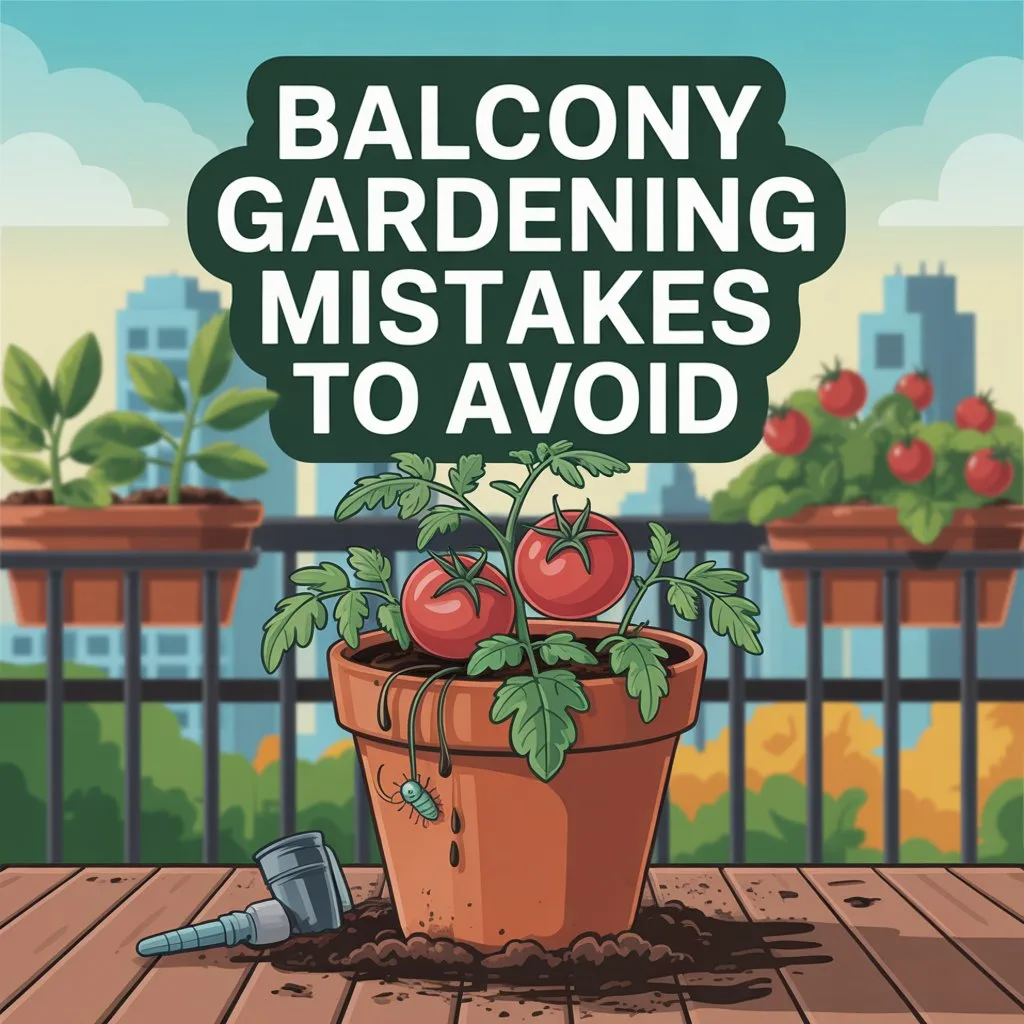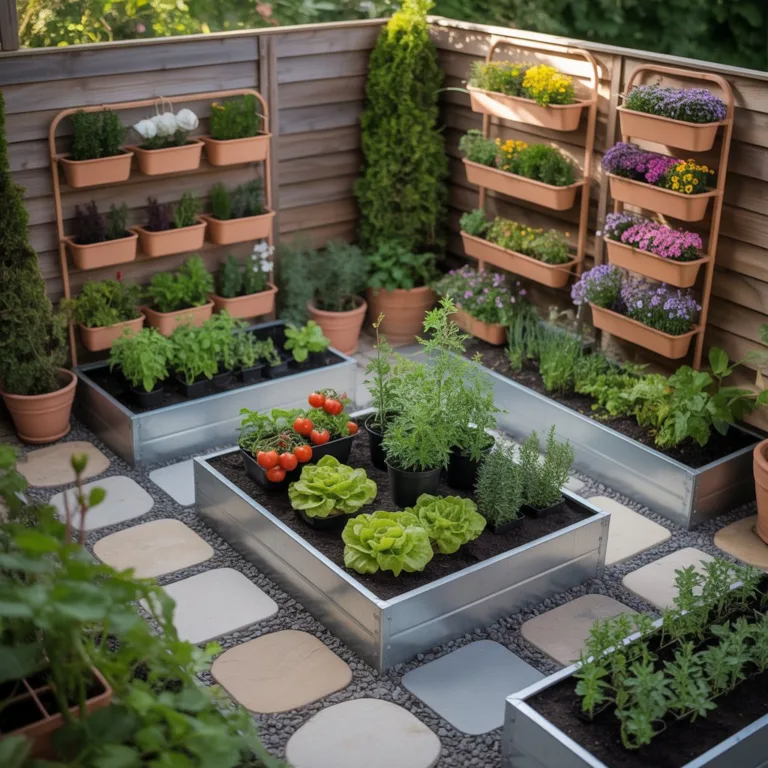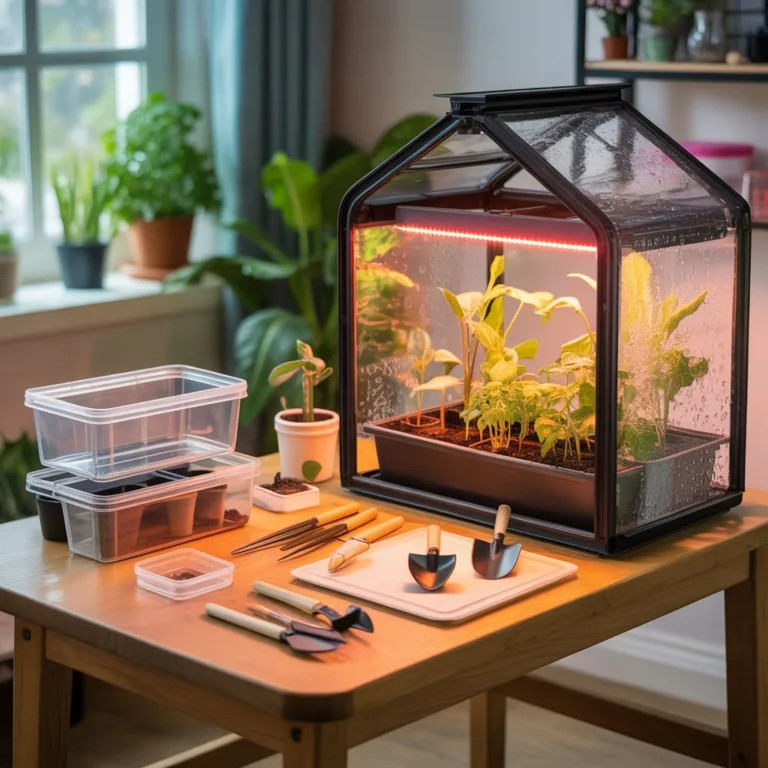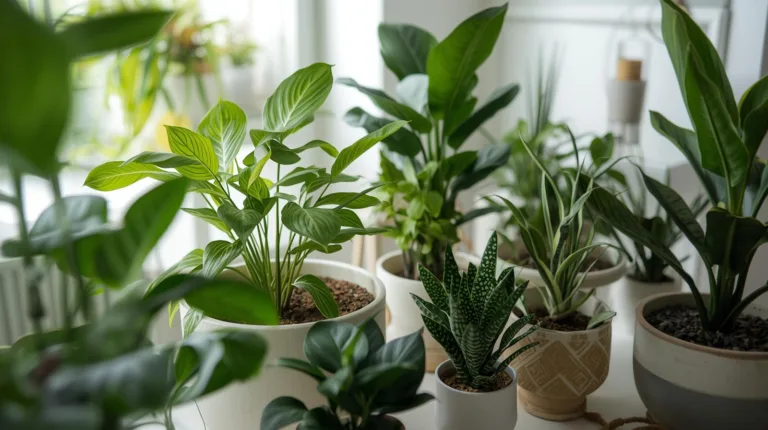Balcony gardening has become an inspiring way to reconnect with nature, even in small urban spaces. From herbs and flowers to mini vegetable gardens, a balcony can be transformed into a peaceful green retreat that nourishes both mind and body. Yet, many new gardeners discover that balcony gardening comes with its own unique challenges. Poor lighting, limited space, heavy winds, and container issues can make or break your plants’ success.

Learning how to avoid common balcony gardening mistakes can save time, effort, and frustration — while helping your plants thrive in an eco-friendly and sustainable way. Whether you’re growing basil for your kitchen, succulents for decoration, or tomatoes for home cooking, understanding the pitfalls of balcony gardening ensures your green space stays beautiful and productive all year round.
Ignoring Sunlight Requirements
One of the most common balcony gardening mistakes is overlooking the sunlight conditions your plants need. Each plant species has unique light requirements — and not all balconies receive the same amount of direct sun.
South-facing balconies tend to get the most sunlight, making them ideal for vegetables and sun-loving plants like rosemary, basil, or lavender. North-facing balconies, on the other hand, often stay shaded for most of the day and are better suited for ferns, ivy, and shade-tolerant herbs such as mint or parsley.
Eco-friendly gardeners can maximize available light by using reflective surfaces like mirrors or light-colored walls to bounce sunlight toward the plants. Rotating pots occasionally helps ensure even growth and prevents one side of the plant from becoming leggy or pale.
When selecting plants, always consider the natural light your balcony receives rather than trying to force sun-demanding plants to survive in the shade. Choosing the right plant for the right space is key to sustainable balcony gardening.
Overcrowding Your Space
It’s easy to get excited and fill every inch of your balcony with plants, but overcrowding is one of the biggest mistakes urban gardeners make. When too many plants share a limited space, they compete for nutrients, sunlight, and airflow, creating the perfect environment for disease and pest problems.
An eco-friendly approach is to focus on quality over quantity. Instead of dozens of cramped pots, choose a few well-spaced containers that allow each plant to grow properly. Vertical gardening can also help — wall planters, hanging baskets, or stacked containers save floor space while giving plants enough room to thrive.
Remember that proper air circulation is crucial for plant health. Adequate spacing reduces humidity buildup, which helps prevent fungal growth and rot.
If you dream of a lush balcony garden, think like a designer — use plants of varying heights, colors, and textures for visual appeal without overcrowding.
Using the Wrong Containers
Container choice affects everything from root development to drainage. Many beginner balcony gardeners use decorative pots without proper drainage holes, which can lead to root rot and suffocated plants.
Opt for pots made of breathable materials such as terracotta or clay. These natural materials allow air and moisture exchange, keeping roots healthy. If you prefer lightweight alternatives for safety reasons, choose recycled fabric grow bags or biodegradable bamboo planters.
Avoid reusing plastic containers that have held chemicals or food products unless they are thoroughly cleaned and safe for plant use. Sustainability-minded gardeners can repurpose old wooden boxes, metal tins, or glass jars — as long as they provide adequate drainage.
Another overlooked factor is pot size. Small containers dry out quickly and limit root growth, while overly large ones retain too much moisture. Match the container size to the plant’s mature growth habit for balanced development.
Neglecting Drainage
Without proper drainage, even the healthiest plants can quickly die. Balcony gardeners often make the mistake of placing pots directly on surfaces without drainage trays or holes, trapping excess water.
To avoid this, ensure every container has drainage holes and use a layer of pebbles or gravel at the bottom to prevent clogging. Place saucers beneath pots to catch runoff, but empty them regularly to prevent standing water and mosquito breeding.
Sustainable gardeners can reuse old terracotta shards, cork pieces, or even broken pottery as drainage fillers instead of synthetic materials. These natural solutions improve airflow and keep roots healthy.
Drainage isn’t just about excess water — it’s about balance. Proper water management ensures your plants get enough moisture without drowning.
Overwatering or Underwatering
Watering mistakes are common in balcony gardening, especially when dealing with changing weather conditions. Many plants die not from neglect but from too much attention.
Overwatering suffocates roots and causes rot, while underwatering leads to wilting and nutrient deficiency. The key is understanding your plant’s needs and the microclimate of your balcony.
For instance, balconies exposed to wind and sun may dry out faster, requiring more frequent watering. Shaded balconies may retain moisture longer. Always check the top inch of soil before watering — if it feels dry, it’s time to water.
Eco-conscious gardeners can collect rainwater in barrels or containers to reduce water waste. Mulching the soil surface with organic materials like coconut husk, straw, or dry leaves also helps retain moisture naturally.
Using self-watering pots can further promote sustainability, ensuring your plants get consistent hydration while minimizing waste.
Choosing Inappropriate Plants
Many balcony gardeners fall in love with exotic plants without considering their environmental needs. Not all species thrive in small containers or exposed conditions.
Cacti and succulents may seem like easy choices, but they dislike cold or overly humid environments. On the other hand, tropical plants often struggle in windy, dry conditions typical of high-rise balconies.
The eco-friendly strategy is to select plants that suit your local climate and balcony exposure. Hardy herbs like thyme, oregano, and mint are ideal for beginners. Cherry tomatoes, lettuce, and peppers grow well in sunny balconies. For shaded ones, ferns, begonias, or peace lilies are better options.
Native plants are particularly sustainable since they’re adapted to local weather patterns and attract beneficial insects like bees and butterflies. Always research plant behavior before adding it to your balcony garden.
Ignoring Wind and Weather Exposure
Balcony gardens face harsher conditions than ground-level gardens. Strong winds can damage delicate plants, dry out soil quickly, or even topple pots.
One sustainable solution is to create natural windbreaks using bamboo screens, trellises, or taller plants like lemongrass or sunflowers. These structures protect smaller plants while maintaining airflow.
During colder months, insulate containers with burlap, straw, or old fabric to protect roots from freezing. In extreme heat, move pots away from reflective surfaces like glass or metal railings that can amplify sunlight and burn leaves.
Gardening with weather awareness ensures your plants stay resilient throughout the seasons while minimizing resource waste.
Neglecting Soil Quality
Balcony gardeners often reuse cheap or compacted soil, which leads to poor drainage and nutrient deficiencies. Container plants depend entirely on the soil you provide, so investing in healthy, sustainable soil is essential.
Create your own eco-friendly potting mix using compost, coconut coir, and perlite. Avoid peat moss due to its environmental impact. Instead, rely on renewable resources like leaf mold or composted bark.
Refresh your soil annually by adding homemade compost or organic fertilizers such as banana peels, eggshells, or used coffee grounds. These natural amendments enrich the soil without chemicals, keeping it fertile and alive.
Healthy soil is the foundation of every thriving balcony garden — and it’s also one of the easiest areas to make sustainable improvements.
Forgetting Fertilization
Even the best soil loses nutrients over time, especially in containers. However, excessive use of synthetic fertilizers harms the environment and can damage plants.
Eco gardeners prefer natural fertilizers like compost tea, worm castings, or organic seaweed extract. These feed the soil microbiome, ensuring long-term health rather than quick fixes.
Fertilize during the growing season and reduce feeding in winter when most plants rest. Overfeeding can cause salt buildup, leading to leaf burn or stunted growth.
A sustainable rule of thumb: feed the soil, not just the plant.
Poor Planning and Layout
Balcony gardens thrive when thoughtfully designed. Many gardeners fail because they overlook planning — resulting in clutter, poor light distribution, and inefficient use of space.
Before starting, analyze your balcony’s sunlight pattern, available area, and weight limits. Arrange plants by size and water needs: tall plants at the back or corners, small herbs or flowers at the front. Hanging baskets and railing planters can add greenery without consuming floor space.
Incorporate sustainable materials for shelving and décor, like reclaimed wood, bamboo, or recycled metal. Functional beauty is the essence of eco-conscious balcony design.
Proper planning not only enhances aesthetics but also makes maintenance easier and more efficient.
Forgetting Regular Maintenance
Even low-maintenance plants need regular care. Ignoring dead leaves, pests, or pruning can quickly turn a balcony garden into a chaotic mess.
Inspect your plants weekly for pests such as aphids or spider mites. Remove dead leaves to promote airflow and reduce disease risk. Pruning encourages healthy new growth and prevents overcrowding.
Balcony environments can change quickly due to wind, dust, or pollution. Wiping leaves occasionally helps plants photosynthesize efficiently.
Composting organic waste from pruning and trimming keeps your gardening process circular and eco-friendly. Regular maintenance ensures your balcony remains both green and sustainable.
Disregarding Sustainability
The biggest mistake balcony gardeners make is treating gardening as a hobby rather than a sustainable lifestyle choice. True eco-friendly gardening goes beyond the plants themselves — it’s about how you garden.
Reduce plastic waste by using biodegradable pots. Collect rainwater. Avoid chemical pesticides and fertilizers. Reuse soil, compost your waste, and grow native or edible plants to create self-sufficiency.
Every small action contributes to a greener planet, even from the smallest balcony.
Embracing Growth — Both Yours and Your Plants’
Balcony gardening is more than cultivating plants; it’s a personal journey of learning, patience, and creativity. Mistakes are inevitable, but each one teaches valuable lessons about balance, sustainability, and respect for nature.
By avoiding these common errors — from poor container choice to neglecting light and soil — you’ll build a thriving mini-ecosystem right outside your door. Over time, your balcony can become a living reflection of eco-conscious growth, proving that even limited spaces can make a big environmental impact.
Let your balcony garden grow with care, awareness, and harmony — a daily reminder that green living starts right where you are.

Sofia Greenfield is a sustainable gardening expert and environmental educator who inspires families and urban gardeners to cultivate green spaces responsibly. She shares practical tips on growing vegetables, herbs, and flowers using eco-friendly and recycled materials, emphasizing the joy of gardening while protecting the planet.



